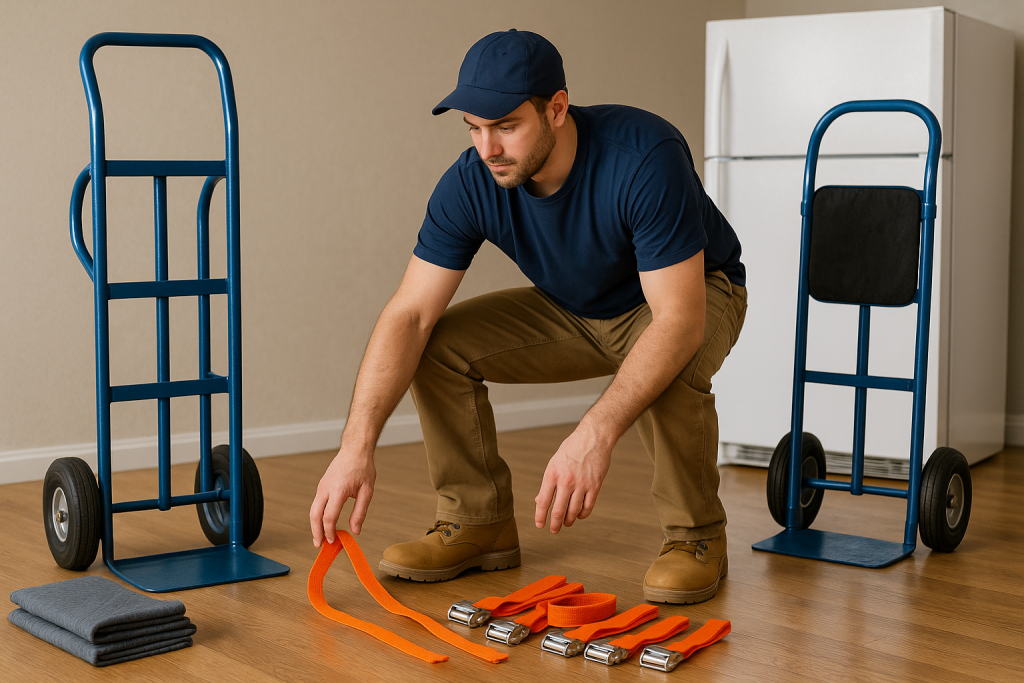How Can Air Duct Cleaning in Springfield MO Improve the Comfort and Efficiency of Your Home?
How Can Air Duct Cleaning in Springfield MO Improve the Comfort and Efficiency of Your Home?

Keeping your home or business comfortable throughout the year involves more than maintaining your heating and cooling system. The condition of your air ducts plays a huge role in the overall air quality and energy efficiency of your space.
Over time, ducts collect dust and debris, pollen, pet dander, and mold spores that circulate through the air in your home, potentially causing allergy and respiratory issues. For residents of Springfield MO, scheduling regular air duct cleaning ensures you enjoy cleaner air, improved hvac performance, and a healthier home.
Why Professional Air Duct Cleaning Matters
Your air ducts are the lungs of your property. Each time your hvac system runs, it pushes air through the ductwork, distributing heated or cooled air throughout your home or office. As the air moves, contaminants such as dust, dirt, and allergens accumulate within the ductwork. Dirty ducts often cause poor airflow, uneven temperatures, and higher energy bills.
By investing in professional air duct cleaning services, you can remove these harmful particles and maintain a healthier environment. Professional technicians use advanced vacuum systems and specialized tools to extract buildup from deep within your ducts. This not only protects your hvac system but also extends its lifespan and helps reduce utility costs.
Benefits of comprehensive air duct cleaning:
- Improved indoor air quality
- Enhanced energy efficiency and airflow
- Reduction in allergens and contaminants
- Cleaner vents and healthier air you breathe
- Extended hvac system life and lower repair costs
Clean ducts make a noticeable difference in how comfortable and fresh your Springfield home or business feels day to day.
Signs It’s Time for Air Duct Cleaning in Springfield
The air ducts in your property can easily be forgotten since they are hidden behind walls and ceilings. However, dirty ducts often show warning signs that should not be ignored.
You may need air duct cleaning in Springfield if you notice:
- Dust accumulating quickly on furniture and vents
- Uneven heating or cooling throughout your home
- A musty odor coming from your ventilation system
- An increase in allergy or respiratory symptoms
- Visible dust, mold, or debris inside vent covers
If you recently remodeled your home, adopted pets, or moved into an older property, your ductwork likely contains dust and debris that restrict airflow. Calling duct cleaning experts in Springfield’s surrounding areas like Nixa, Ozark, Willard, and Marshfield ensures your cleaning needs are handled professionally and safely.
What Happens During Professional Air Duct Cleaning
A professional air duct cleaning service uses specialized tools to remove contaminants from every corner of your home’s ductwork. This detailed cleaning service improves indoor air quality and keeps your hvac system running efficiently.
The process of professional duct cleaning includes:
- Inspection: Technicians examine your ductwork and ventilation system for clogs or buildup.
- Preparation: Vents are sealed off to prevent dust and debris from spreading during system cleaning.
- Deep Cleaning: A powerful vacuum system removes dirt, pet dander, and mold spores from within the ducts.
- Vent and Dryer Cleaning: Many companies also provide dryer vent cleaning service to ensure safe operation and better airflow.
- Final Testing: The hvac system is checked to ensure improved airflow and energy efficiency.
Reputable companies follow standards from the National Air Duct Cleaners Association (NADCA) to deliver safe and effective professional cleaning results. Whether for residential and commercial properties, professional air duct cleaning ensures your air conditioner and furnace can operate without unnecessary strain.
How Air Duct Cleaning Improves Air Quality and Efficiency
The air you breathe indoors can be up to five times more polluted than outdoor air according to the NADCA. Pollutants trapped inside your ductwork continuously circulate throughout your home, causing respiratory issues and reducing your system’s performance.
With expert air duct cleaning Springfield, your hvac system will work more efficiently, pushing clean air evenly through every vent. The removal of contaminants like pollen, pet dander, and mold spores reduces irritants that trigger allergy symptoms and keeps your home comfortable.
Clean ducts also help:
- Lower energy bills by improving hvac performance
- Reduce wear and tear on motors and fans
- Enhance airflow for consistent heating and cooling
- Extend the lifespan of your hvac system
For homeowners across the Ozarks, investing in professional air duct cleaning services is a cost-effective way to maintain a healthier environment and improve energy efficiency.
Choosing the Right Duct Cleaning Service in Springfield
When selecting a duct cleaning service in Springfield MO, experience and professionalism matter. Always choose professional technicians who are trained to handle your home’s air ducts carefully. The best vent cleaning services will include a thorough inspection, upfront pricing, and transparent communication about your cleaning needs.
Tips for finding the right duct cleaning experts:
- Look for companies certified by the National Air Duct Cleaners Association
- Ask for free estimates and clear, upfront pricing
- Choose professional air duct cleaning services that include both ducts and dryer vents
- Check reviews from customers in Springfield, Nixa, Ozark, Willard, and Marshfield
- Ensure they offer residential and commercial cleaning options
A reliable provider will prioritize customer satisfaction, use safe and efficient methods, and ensure you get peace of mind knowing your air in your home is clean and fresh.
Maintain Cleaner Air Year-Round
After scheduling a comprehensive air duct cleaning, keeping your ducts clean between services helps maintain your system’s efficiency. Simple habits can prevent buildup and protect your hvac system from clogging again.
Maintenance tips for cleaner air:
- Replace air filters every 2 to 3 months
- Keep furniture and drapes away from vents
- Vacuum regularly to reduce dust buildup
- Schedule annual hvac maintenance to monitor system performance
- Use high-quality filters to trap smaller particles
By taking these steps, you can ensure your home’s air ducts remain in good condition and your family continues to breathe easier throughout the year.
Contact Redeemed for Expert Air Duct Cleaning in Springfield MO
If you are looking for expert air duct cleaning Springfield residents trust, Redeemed is here to help. We specialize in professional air duct cleaning, dryer vent cleaning, and ductwork cleaning for both homes and businesses in Springfield and nearby areas such as Ozark, Nixa, Willard, and Marshfield.
Our team of professional technicians follows the highest NADCA standards and uses advanced vacuum and system cleaning equipment to deliver outstanding results. Whether you need a cleaning service for your home’s ductwork or a complete hvac system cleaning, we offer upfront pricing, free estimates, and a commitment to customer satisfaction.
Our goal is to provide you with clean ducts air duct cleaning Springfield can rely on, ensuring cleaner air, greater energy efficiency, and long-lasting peace of mind.
Ready to keep your home comfortable and healthy?
Visit our website for professional duct cleaning services near Springfield MO. Learn more about our air duct cleaning service and dryer vent cleaning, or contact us today to schedule your appointment. Let us help you create a healthier home and improve the air you breathe.

Redeemed HVAC
10224 W Farm Rd 178, Republic, MO 65738
(417) 241-5687























